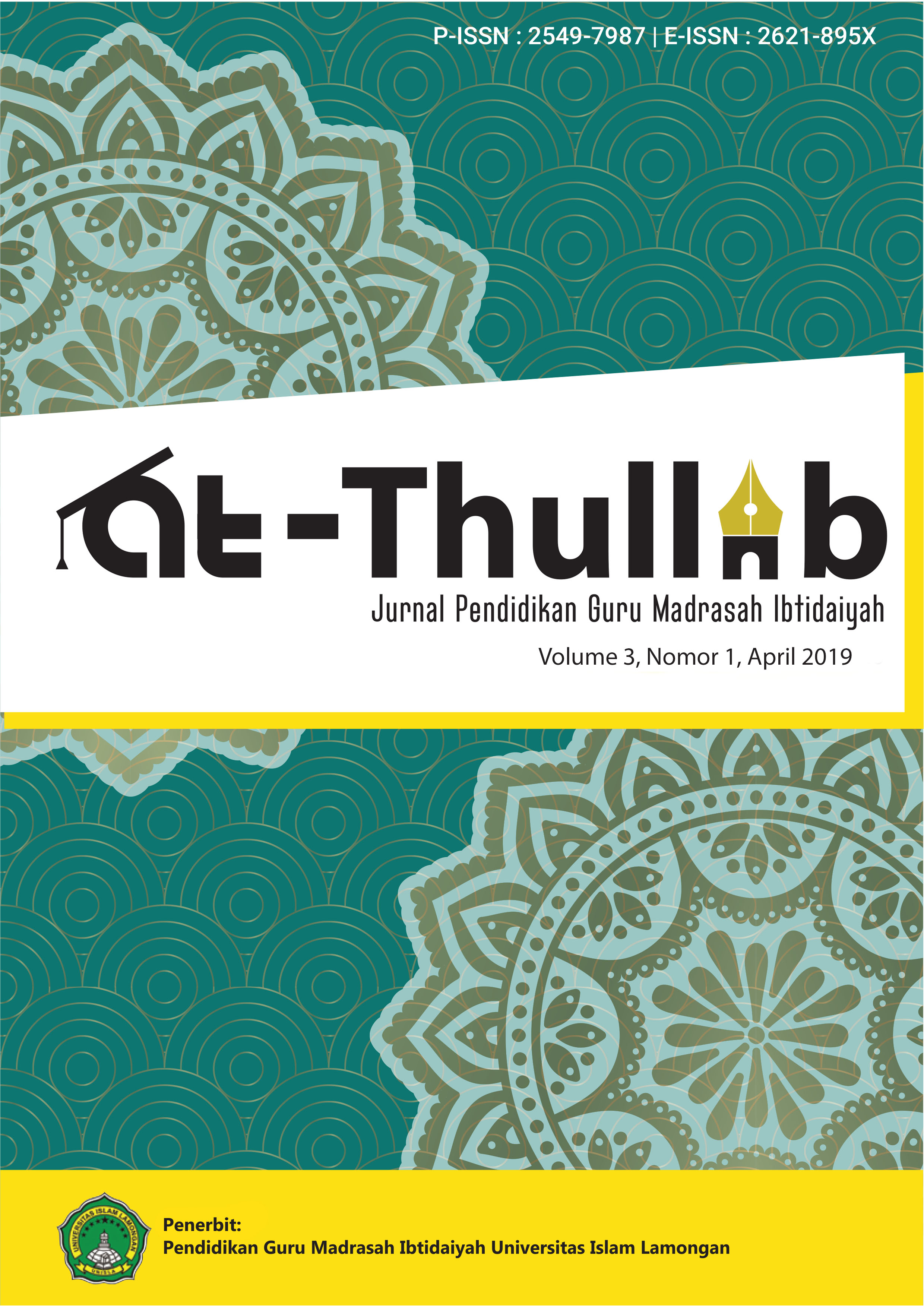EFEKTIVITAS METODE PROBLEM BASED LEARNING DALAM MENINGKATKAN KEAKTIFAN SISWA MI TARBIYATUL ATHFAL BABAT
DOI:
https://doi.org/10.30736/atl.v3i1.199Keywords:
Effectivity, Problem Based Learning, Student Activeness.Abstract
Student activity is one of the learning activities that should be trained to students because high scientific reasoning will affect students in making decisions and solving problems. It takes seriousness in practicing scientific reasoning skills. So the teacher must choose the appropriate learning approach. This article discusses the problem based learning model which is an inquiry-based learning model, where learning begins by giving a problem. The second discussion, introduced patterns of scientific reasoning that can be trained on students both at the concrete and formal operational stages. At the end of the discussion, the PBL model will be able to facilitate students in developing scientific reasoningDownloads
References
Arends., (2008). Learning to Teach (Belajar untuk Mengajar). Yogyakarta: Pustaka Pelajar.
Depdiknas., (2007). Pedoman Penjaminan Mutu Sekolah/Madrasah Bertaraf Internasional pada Jenjang Pendidikan Dasar dan Menengah. Jakarta: Depdiknas
Duschl, R. A., Schweingruber, H. A., & Shouse, A. W. (2007). Taking Science to School: Learning and Teaching Science in Grades K-8. Washington, D.C.: The National Academies Press.
Mulyasa.,(2002). Manajemen Berbasis Sekolah: Konsep, Strategi dan Implementasi. Bandung: Remaja Rosda Karya
Nana Sudjana., (2004). Dasar-Dasar Proses Belajar Mengajar. Bandung: Sinar Baru Algessindo
Sardiman (2001). Interaksi dan Motivasi belajar Mengajar. Jakarta: Raja Grafindo Persada
Sudjana., (2006). Cara Belajar Siswa Aktif. Bandung: Remaja Rosdakarya.
Oemar Hamalik., (2002). Psikologi Belajar Mengajar. Bandung: Sinar Baru Algessindo
Usman., Uzer. (1993). Upaya Optimalisasi Kegiatan Belajar Mengajar. PT. Remaja Rosdakarya : Bandung
Downloads
Published
How to Cite
Issue
Section
License
Authors who publish with this journal agree to the following terms:
The journal allow the authors to hold the copyright without restrictions and allow the authors to retain publishing rights without restrictions. Authors retain copyright and grant the journal right of first publication with the work simultaneously licensed under a Creative Commons Attribution-ShareAlike 4.0 International License. that allows others to share the work with an acknowledgement of the work's authorship and initial publication in this journal.
Authors are able to enter into separate, additional contractual arrangements for the non-exclusive distribution of the journal's published version of the work (e.g., post it to an institutional repository or publish it in a book), with an acknowledgement of its initial publication in this journal.
Authors are permitted and encouraged to post their work online (e.g., in institutional repositories or on their website) prior to and during the submission process, as it can lead to productive exchanges, as well as earlier and greater citation of published work (See The Effect of Open Access).
The journal allows third parties (readers, researchers, and others) to share and adapt the material in line with the license. In addition, the material must be given appropriate credit, provided with a link to the license, and indicate if changes were made. If authors remix, transform, or build upon the material, they must distribute their contributions under the same license as the original.













